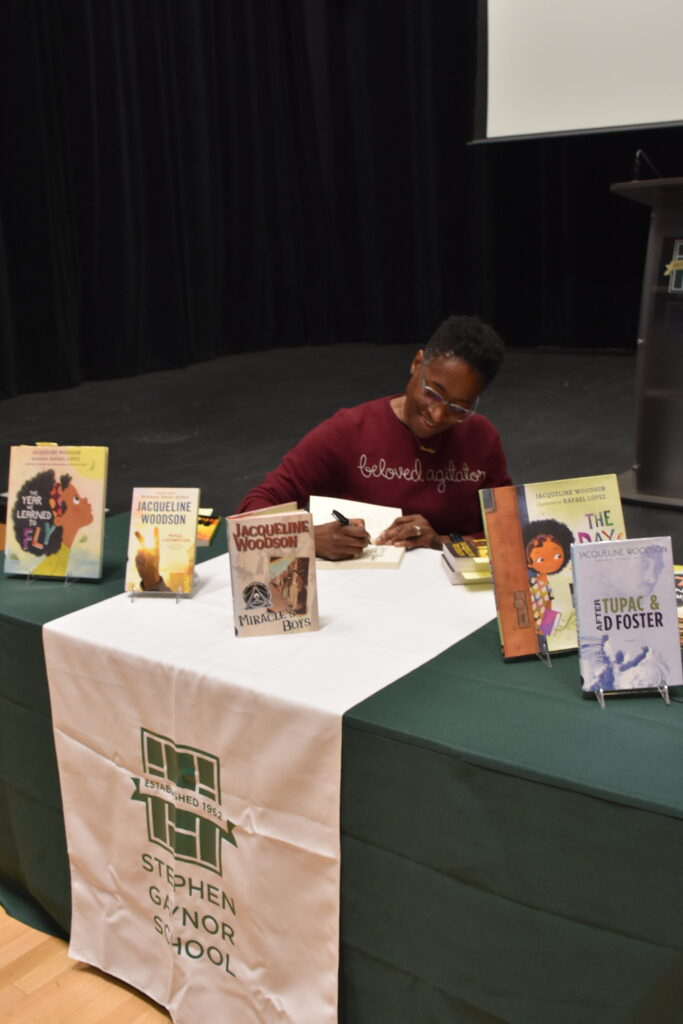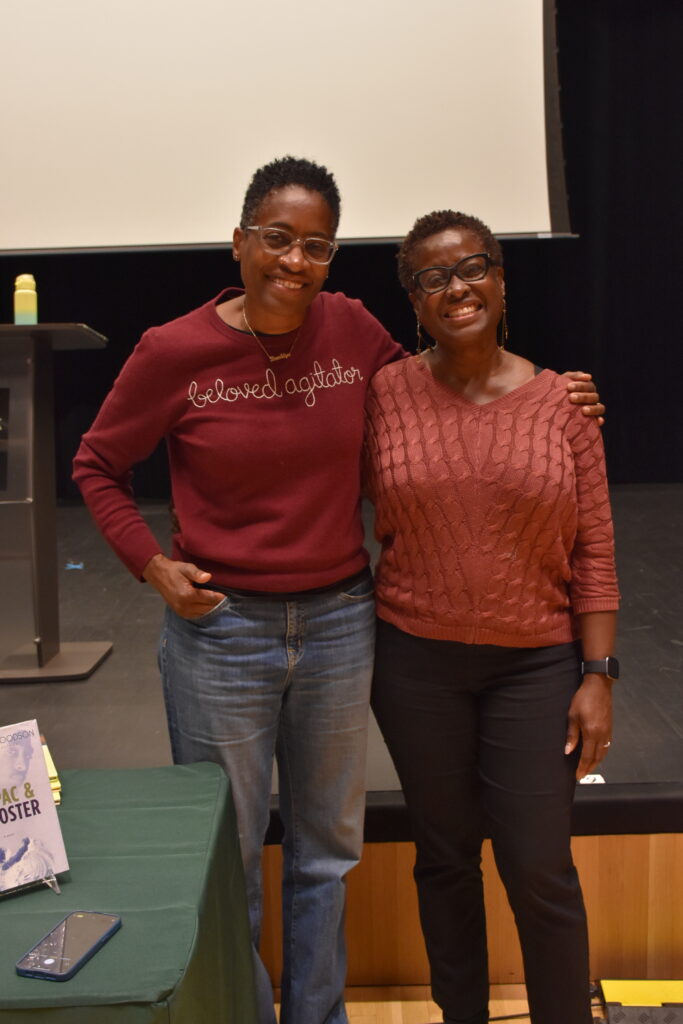Each year, the Parents Association is proud to welcome featured authors for student assemblies in conjunction with the Book Fair. This year, Gaynor was delighted to welcome renowned author Jacqueline Woodson. Woodson is a National Book Award-winner, a MacArthur “Genius Grant” Fellow, previously served as the Young People’s Poet Laureate from 2015 to 2017, and was named the National Ambassador for Young People’s Literature by the Library of Congress for 2018-19. With an expansive catalog of over 40 books, Woodson writes for children, adolescents, and adults.
Gaynor welcomed Woodson for two assemblies; one for the Purple, Pink, Red, Orange, and Yellow Clusters, and a second for the Silver, Green, and Blue Clusters. She opened each assembly speaking about her background, and how she became a writer. Woodson explained that she used to get in trouble for lying a lot as a child, and that a teacher told her if she wrote her lies down, they would be fiction instead! This fostered in her a great love of writing, so much so that she would try to finish her work early in school so she could get extra time at the end of class to write.
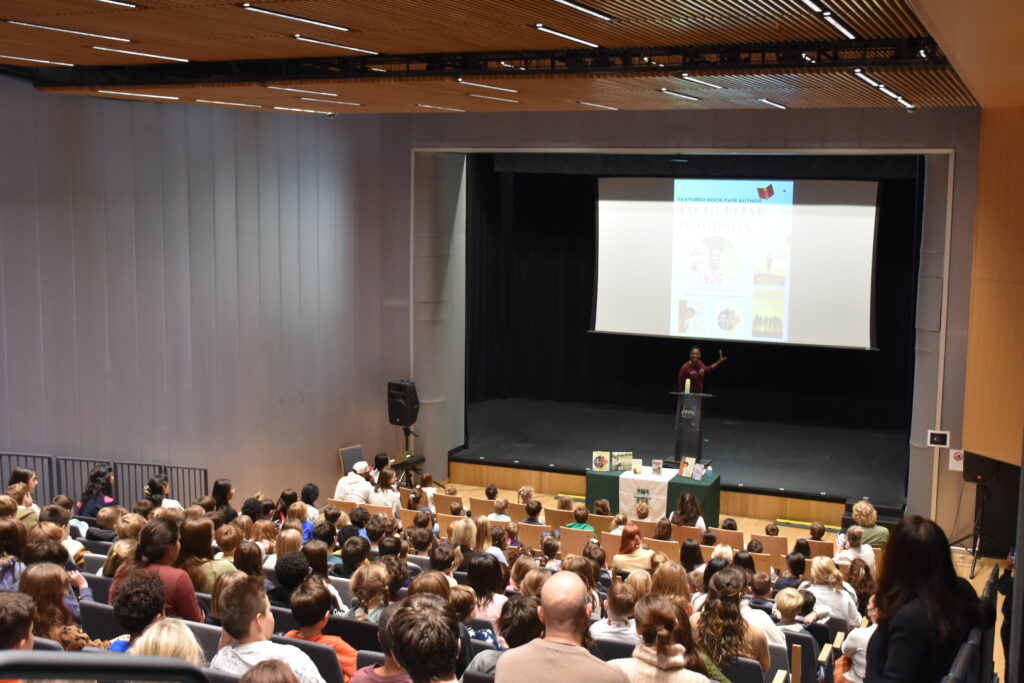

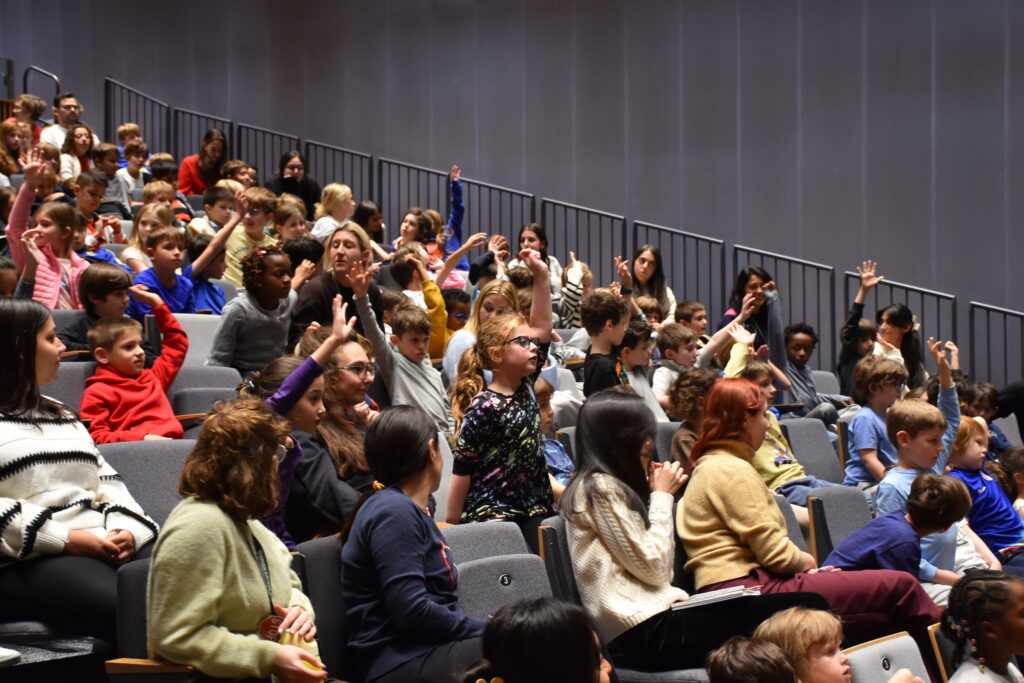
For the younger clusters in the first assembly, Woodson recited some passages from The Other Side, a picture book about two girls fighting against segregation in their town by becoming friends despite the fence that separated them. She told the students that the inspiration for the story came from the neighborhood in Brooklyn that she grew up in, and how she noticed there were some streets with no people of color living on them. Woodson displayed the illustrations in the book to the students, and explained how important pictures are to tell this story. That way, even if a child has trouble reading the words, they can “read” the pictures. She also spoke about the process of working with an illustrator, and how they can change the book’s final outcome. When she first got the illustrations for The Other Side, Woodson was surprised to see that the illustrator had set the story in the past, when she had pictured it as a contemporary setting, much like her childhood neighborhood. Though she initially had a negative reaction to the change in time and place, she later realized that the illustrator’s take on the story made it more universal for readers. It was an example of how collaboration can make the final product even better than she originally imagined!
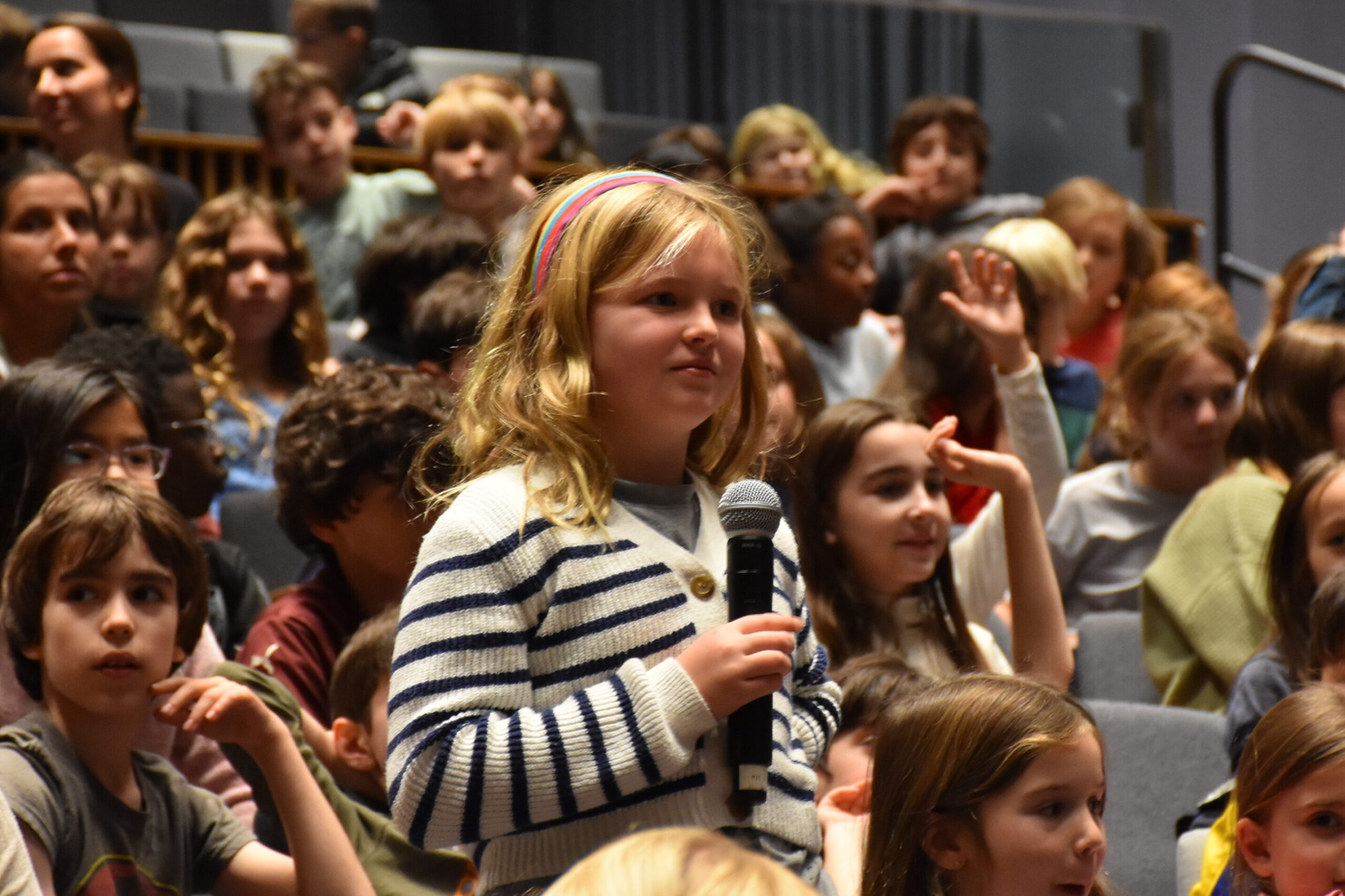
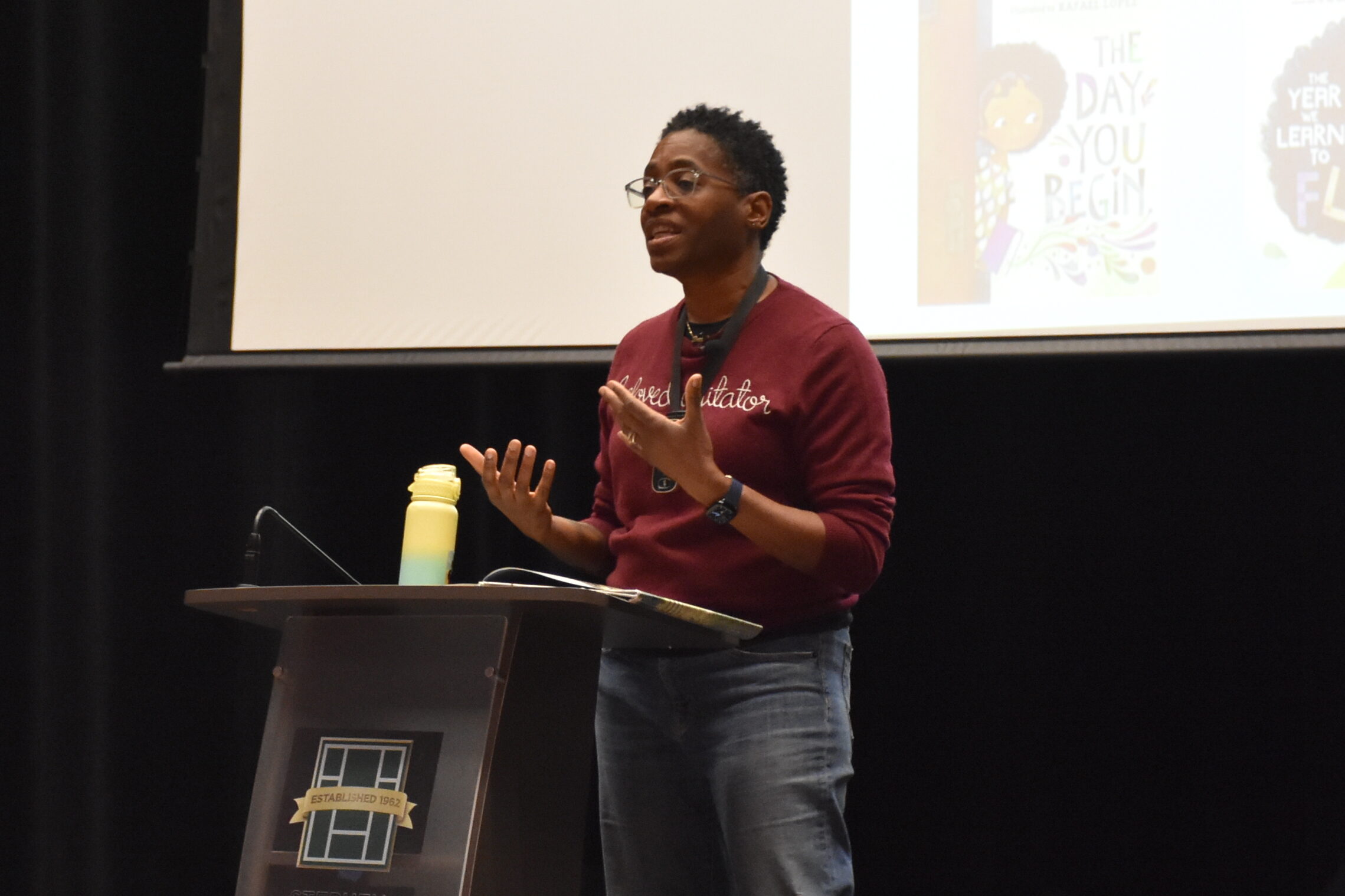
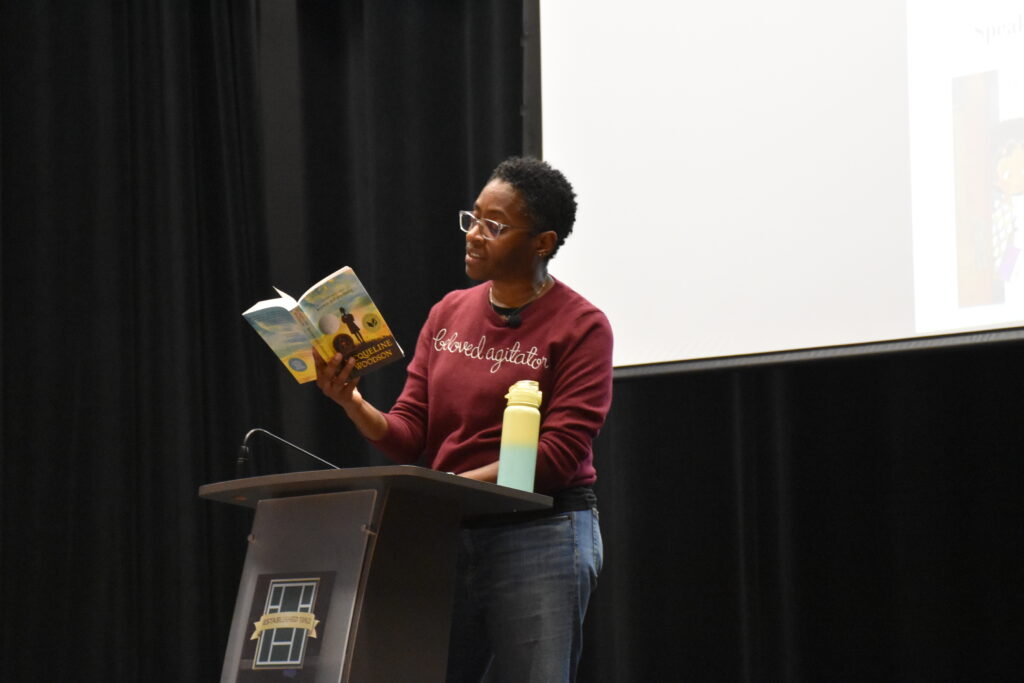
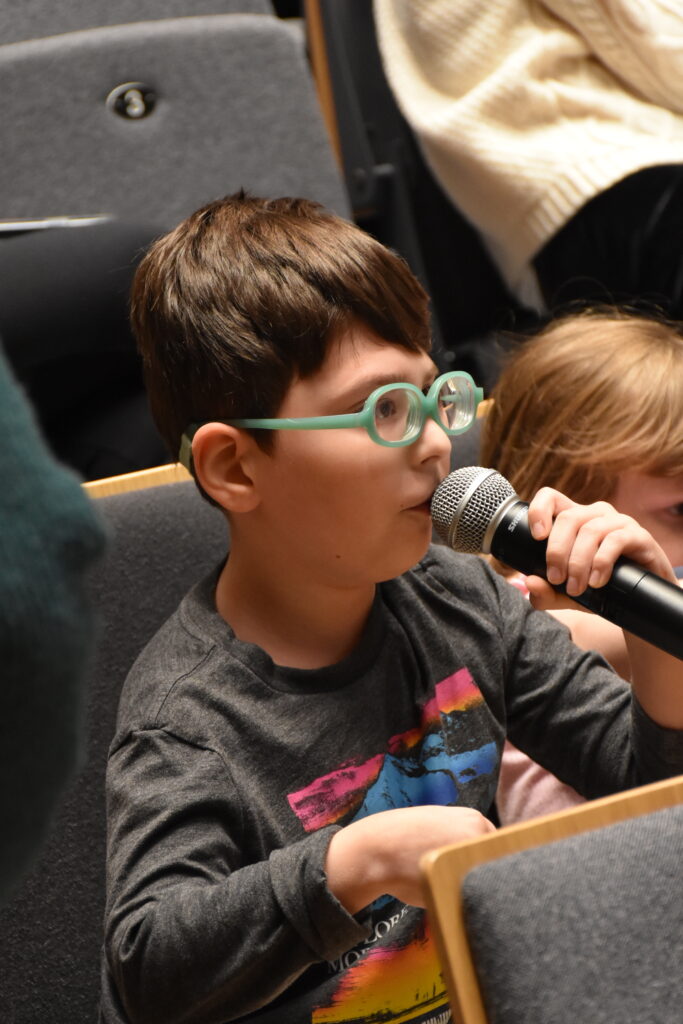
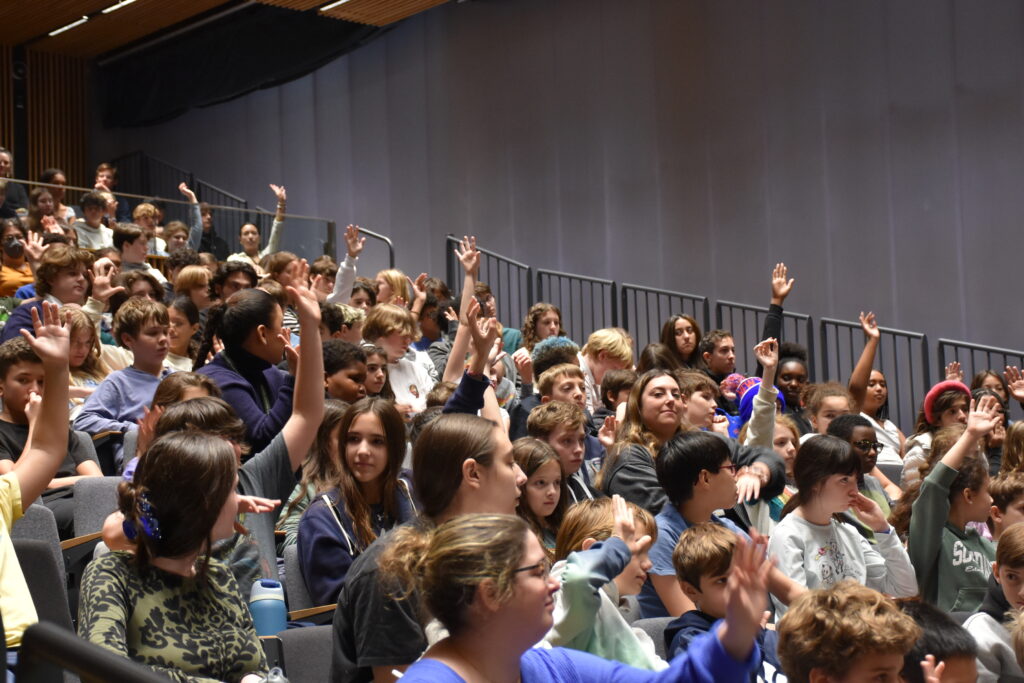
For the Silver through Blue Clusters, Woodson read from her books Brown Girl Dreaming, a memoir written in verse, and Harbor Me, about six middle school students going through tumultuous events in their lives. When explaining what inspired her to write Harbor Me, Woodson said, “I don’t write because I’m trying to teach people something. I write because I have all these questions, and when you write it helps you answer the questions.” She further explained that she was writing to find out what it means to be a child in the circumstances that her characters in Harbor Me are in; from one with a father in jail and another’s father in danger of being deported, to a child who is facing racial profiling and learning to understand what that means. Woodson then went on to talk about Brown Girl Dreaming, which she said she wrote to help her find out what made her the Jacqueline Woodson she is today. She spoke about the research she had to do, the interviews she conducted with her family members, and all of the history she had to learn in order to better understand the people she’d known her entire life.
At the end of each assembly, students had the opportunity to ask Woodson questions, and to learn more about her life and her career as a writer. They asked questions about how her books get made, how long they take, and also about how the illustrations were created for her picture books. In response to a question about her experience as a reader growing up, Woodson explained that despite struggling with challenges reading as a child, she still wanted to be a writer. She added, “To be a writer, you don’t have to be a big reader. You don’t have to be a fast reader. You just have to love stories, and to love writing stories.”
